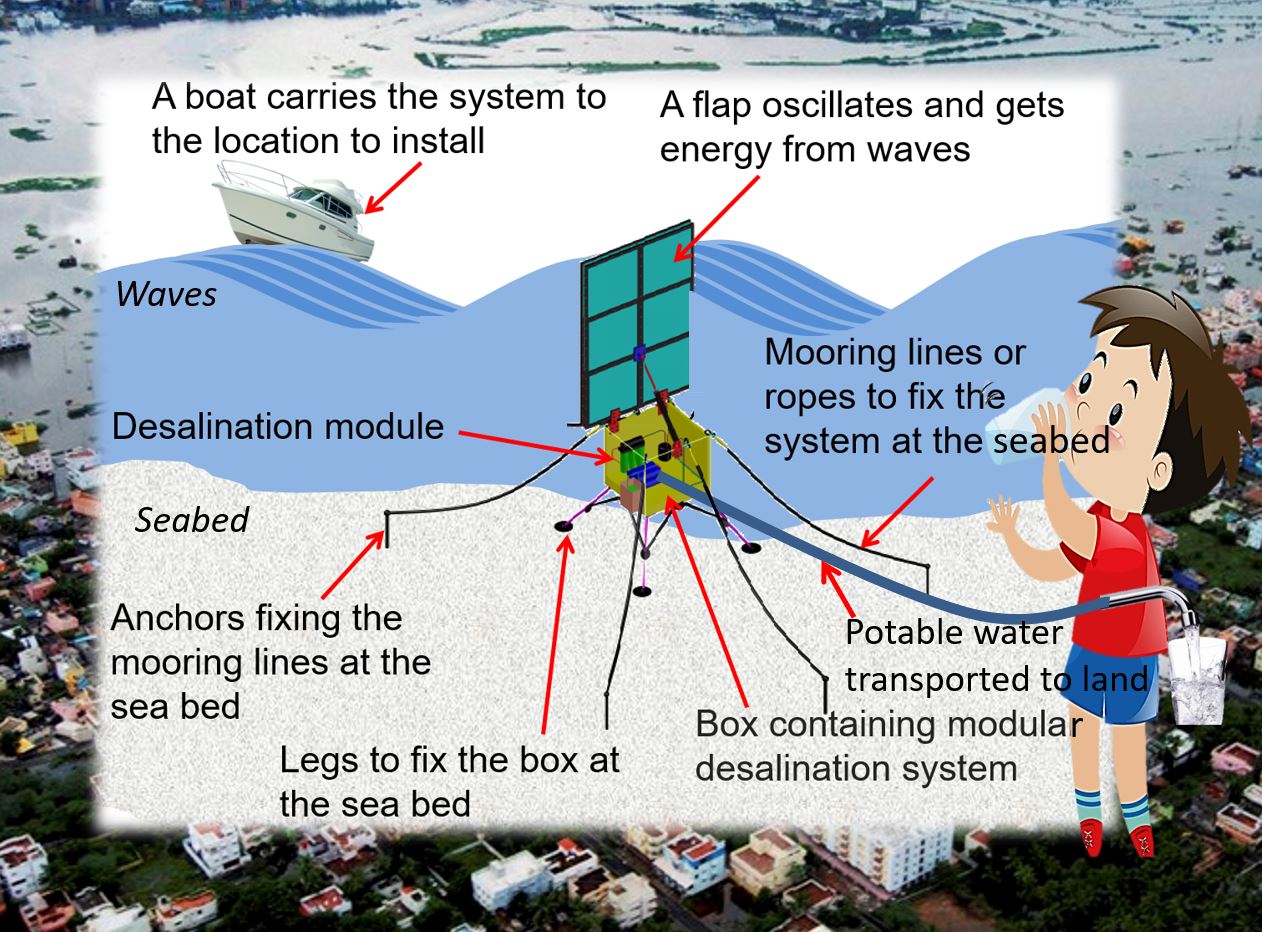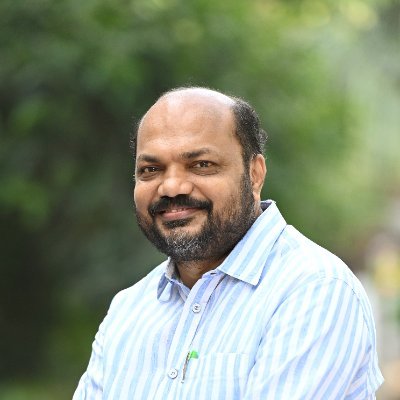Chennai, NFAPost: Indian Institute of Technology Madras Researchers are part of an international team that won the first two phases of the ‘Waves to Water Prize’ in a competition organised by US Department of Energy.
The objective is to design a wave energy-based desalination system to provide post-disaster drinking water supply to coastal areas. Team ‘Nalu e Wai’ is a collaboration between the US, India and Sweden.
Team ‘Nalu e Wai’ (Hawaiian for ‘waves into fresh water’) is working on a rapidly-deployable, small-scale wave-powered desalination system. Deployment of substantial numbers of these devices in such water-scarce regions could produce life-changing results for water-starved coastal communities, IIT Madras said.
The US Department of Energy Waterpower Technologies Office organises the ‘Waves to Water’ Prize to challenge innovators to submit ideas to develop wave-powered desalination systems.
The collaborating universities in Team ‘Nalu e Wai’ are IIT Madras, University of Hawaii in Honolulu, US and Uppsala University, Sweden. Team ‘Nalu e Wai’ was among only 17 winners, out of more than 100 global teams, in Rounds I and II. They were awarded monetary prizes for these selections.
IIT Madras Department of Ocean Engineering Prof. Abdus Samad said, “Our team’s primary driver for this submission was the water shortage in India and to supplement our knowledge in the area of wave energy conversion. We felt strongly that we could devise a system that would achieve the prize-motivated benefits of applicability to disaster-stricken areas and remote communities, while also being scalable to larger community applications such as Chennai, or in developed countries with water shortages, such as coastal California.”
Abdus Samad said, “The idea is new for portable small-scale wave-powered desalination devices. Our concept is entirely scalable. Its modularity allows it to be adapted to varying deployment sites and wave regimes.”
“The same concept could easily be scaled to support much larger water production with increasing flap size and by deploying devices in numbers. Larger RO units, adding additional RO units in parallel, together with larger flap geometry, can easily result in much greater freshwater production. This application is of particular interest to the places like Chennai, where water scarcity is fast reaching critical levels,” he added.
The Waves to Water Prize is a five-stage, $3.3 million contest to accelerate the development of small, modular, wave-powered desalination systems capable of providing potable drinking water in disaster relief scenarios and remote coastal locations. This prize is part of the US Department of Energy’s ‘Water Security Grand Challenge,’ focused on advancing transformational technology and innovation to meet the global need for secure and affordable water.
IIT Madras Department of Applied Mechanics Prof. Abhijit Chaudhuri said, “Desalination has become imperative in order to solve the problem of global freshwater scarcity, particularly for the coastal areas. However, currently available desalination technologies need large amounts of thermal energy or high-quality electricity for seawater purification, which is highly expensive and energy intensive.”
“Hence, the utilization of renewable energies such as solar, wind, tidal and wave energy for freshwater supplies appears to be fundamentally attractive and has been recognised as a potential and sustainable alternative with minimum environmental impact. As one of the most concentrated forms of renewable energy, wave energy offers an environmentally friendly alternative and is highly favourable for seawater desalination in coastal areas with good wave resources,” he added.
Climate change appears to only be worsening the global water crisis. Team ‘Nalu e Wai’ felt they could contribute in a near-term and meaningful way with solutions coming out of the Waves to Water competition. Another motivation comes from the team’s desire to work together on a concept and foster new collaborations in the future.
Krishnakumar Rajagopalan, a senior researcher at the University of Hawaii, said, “Our design is coming from the fundamental understanding of ocean engineering, mechanical systems design, desalination systems and environmental engineering. The whole gamut of works is being done by the experts in different fields. We hope we will provide something priceless to the society.”






